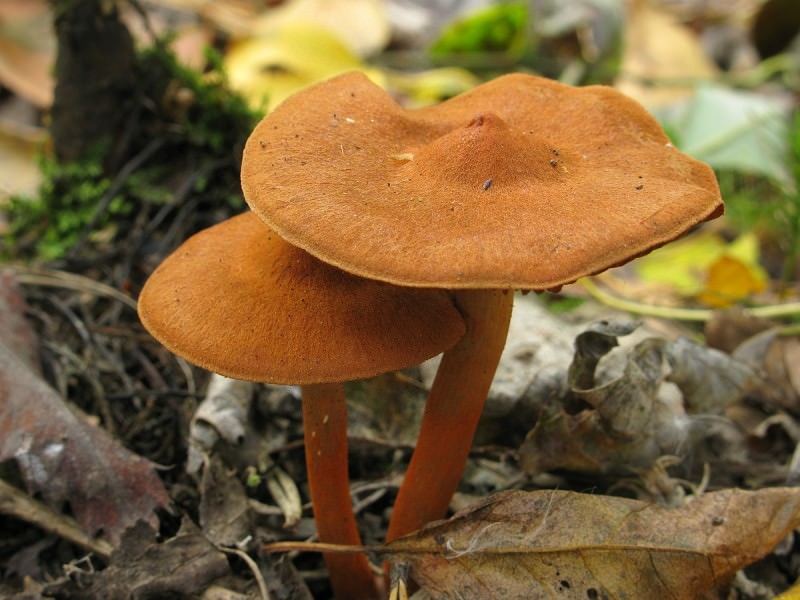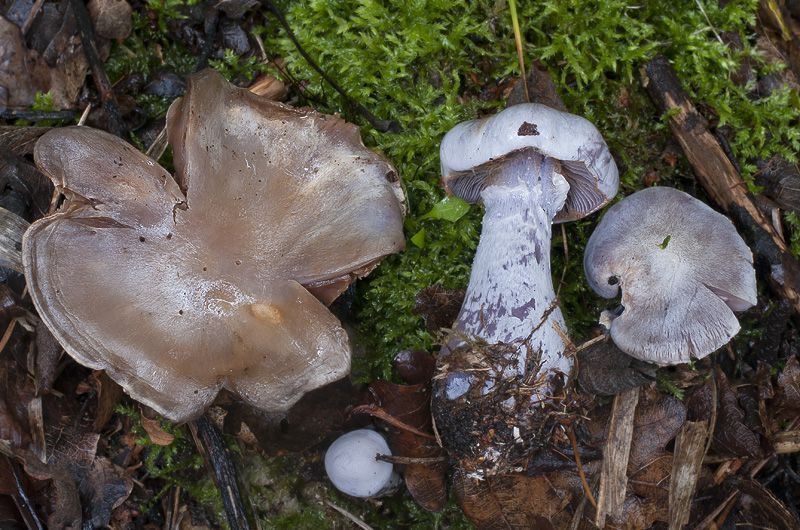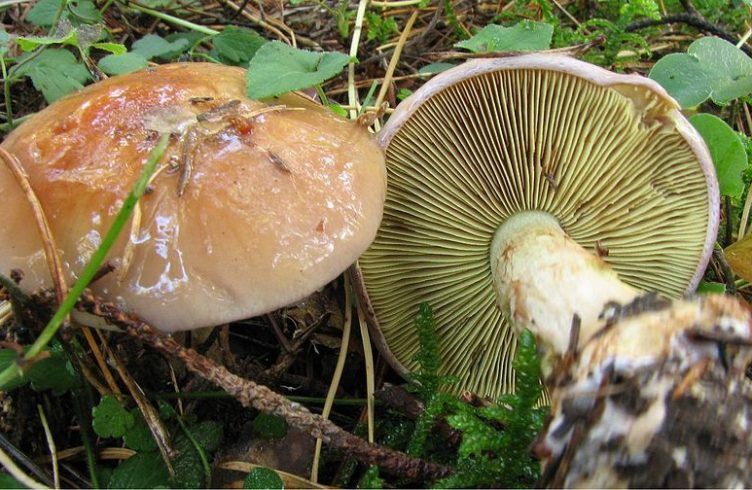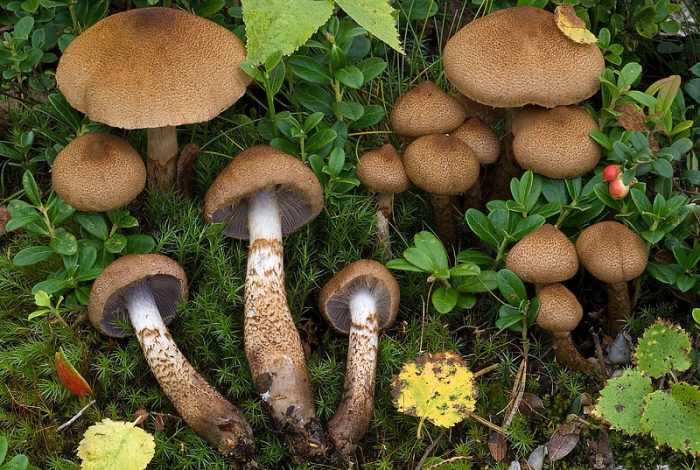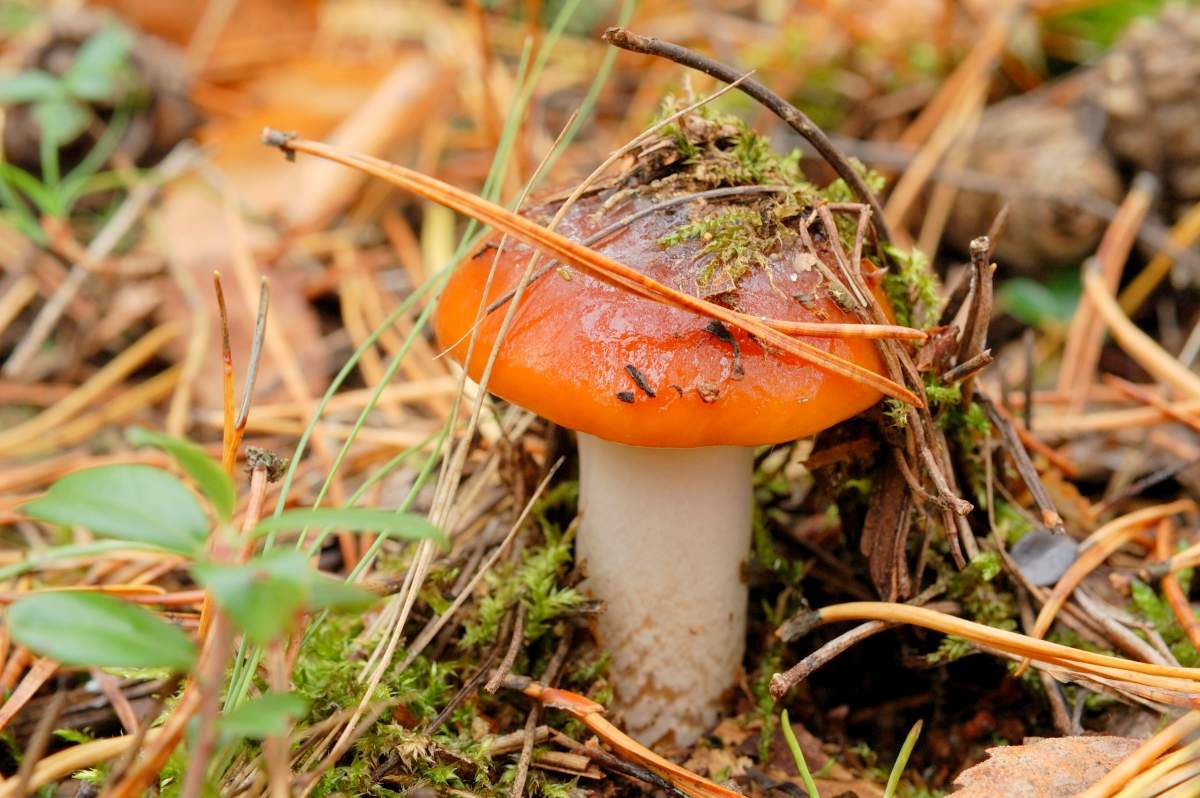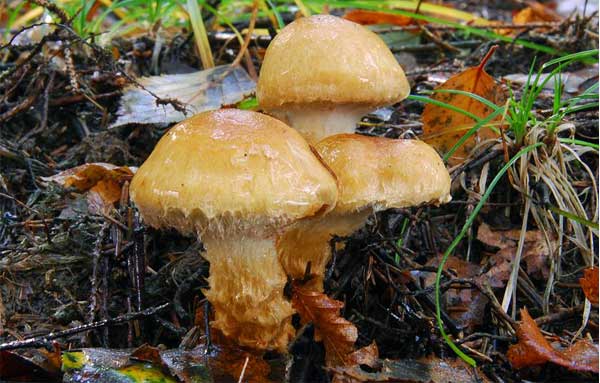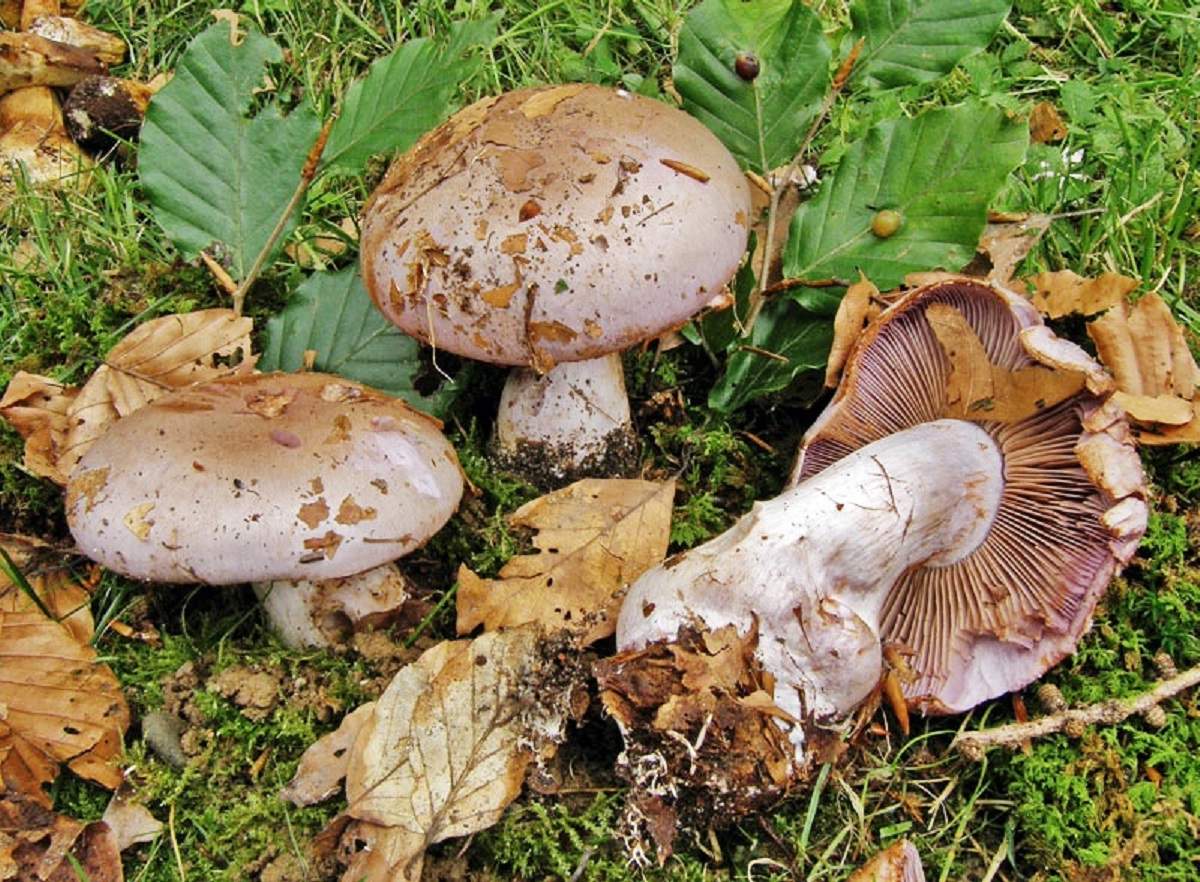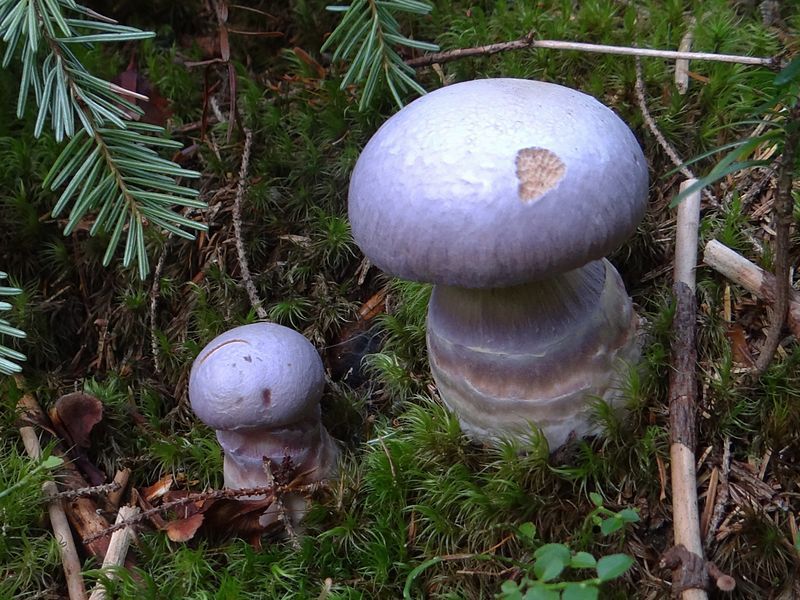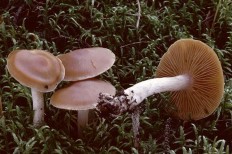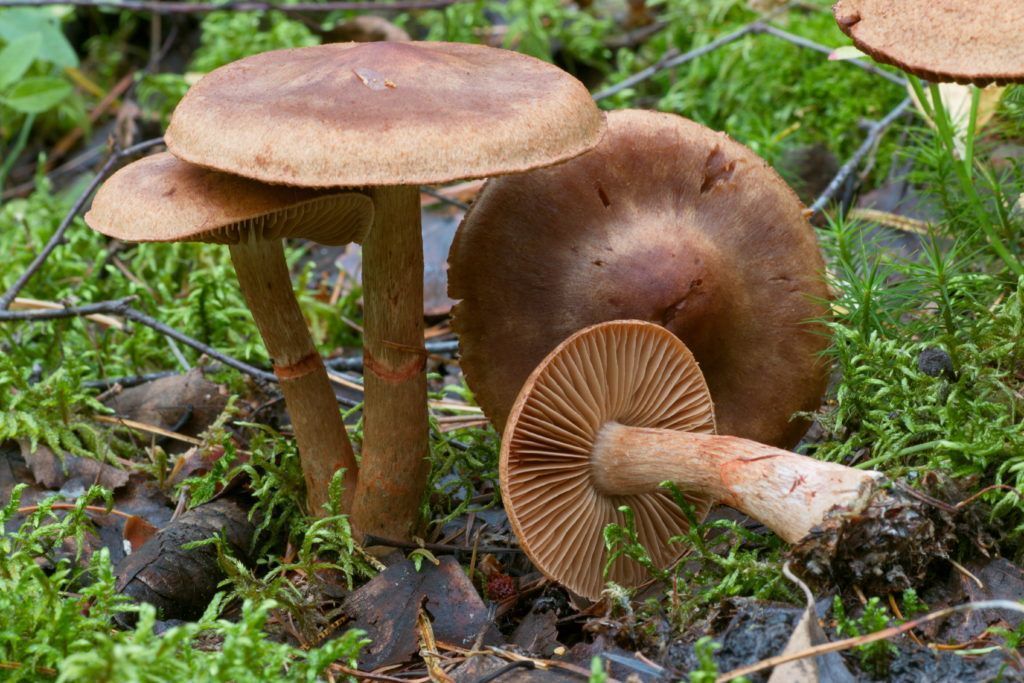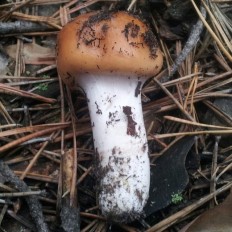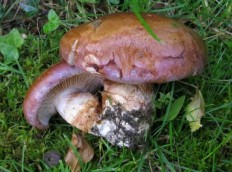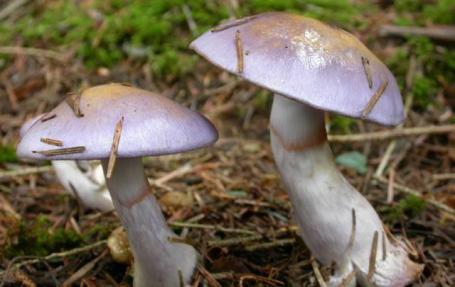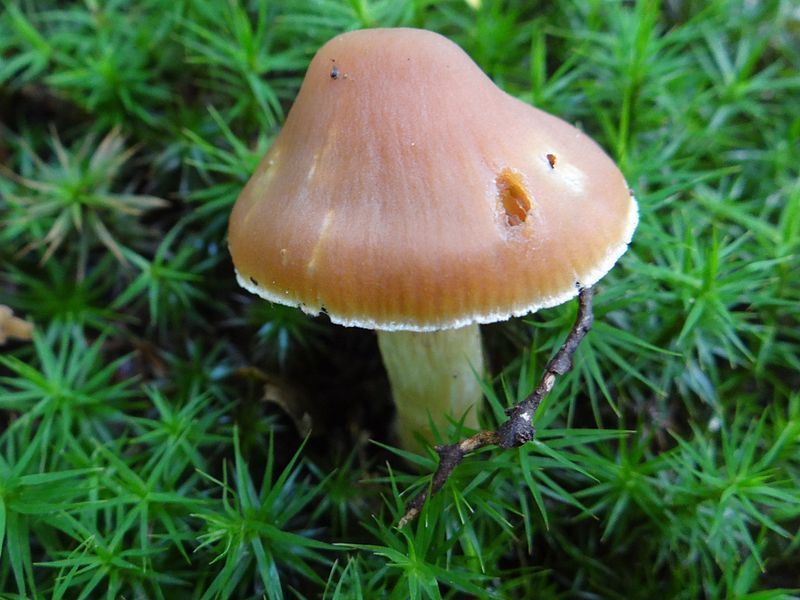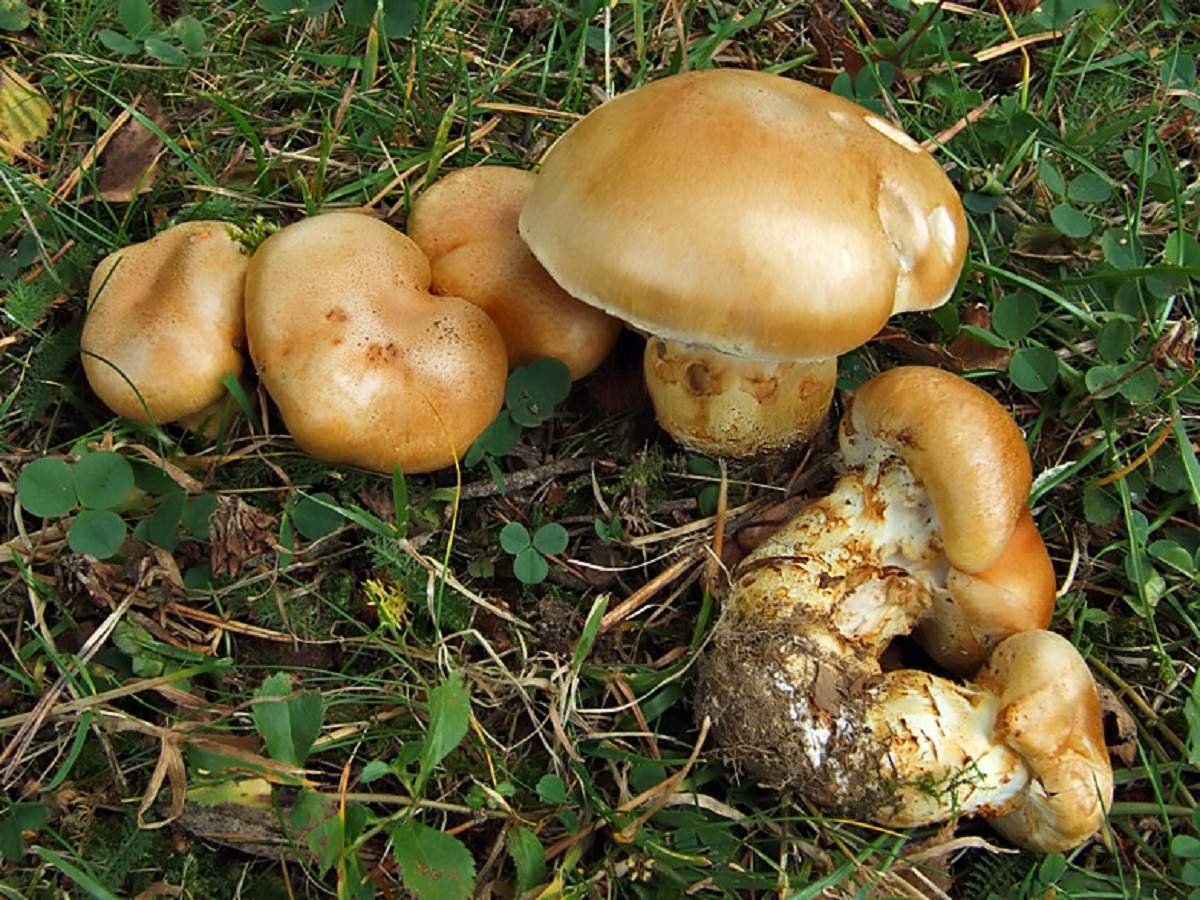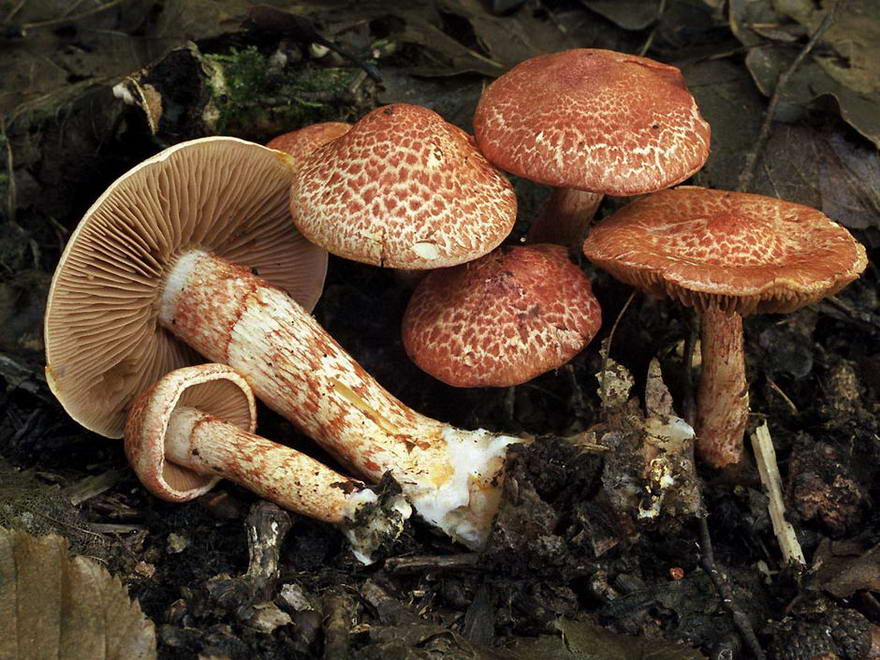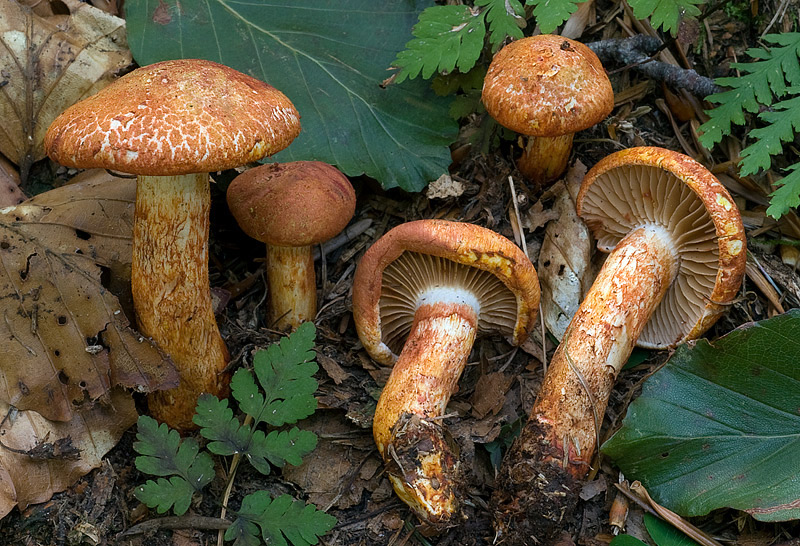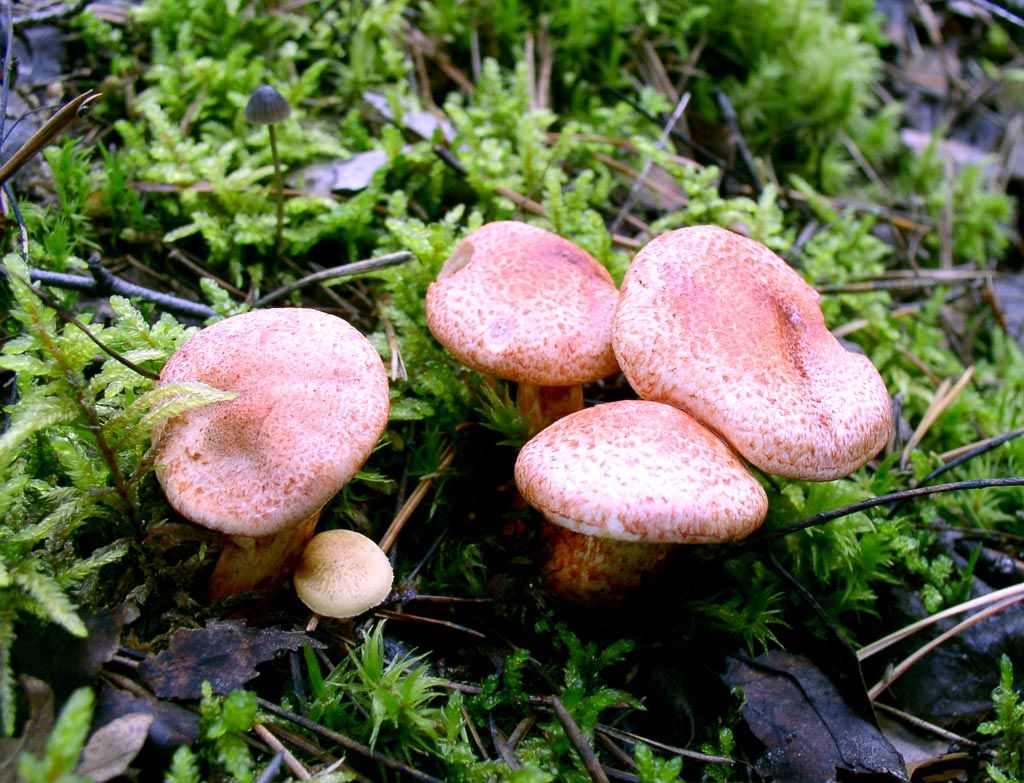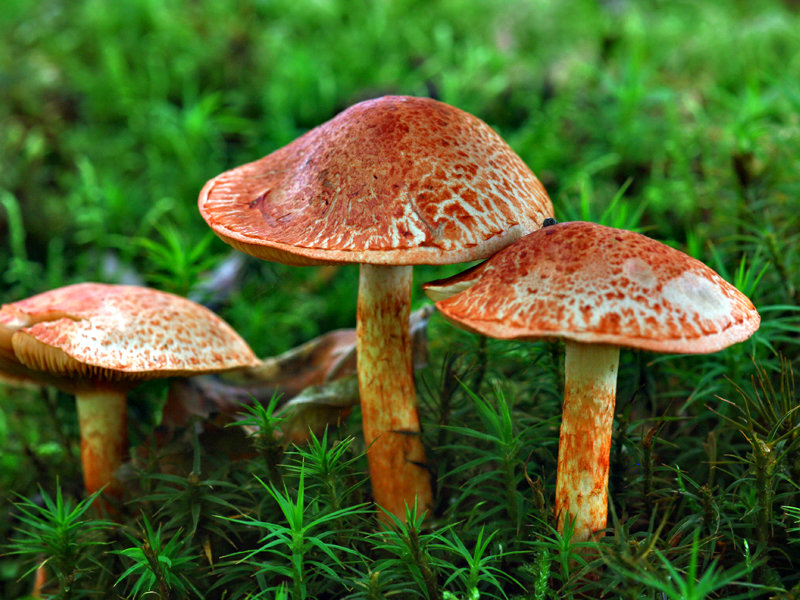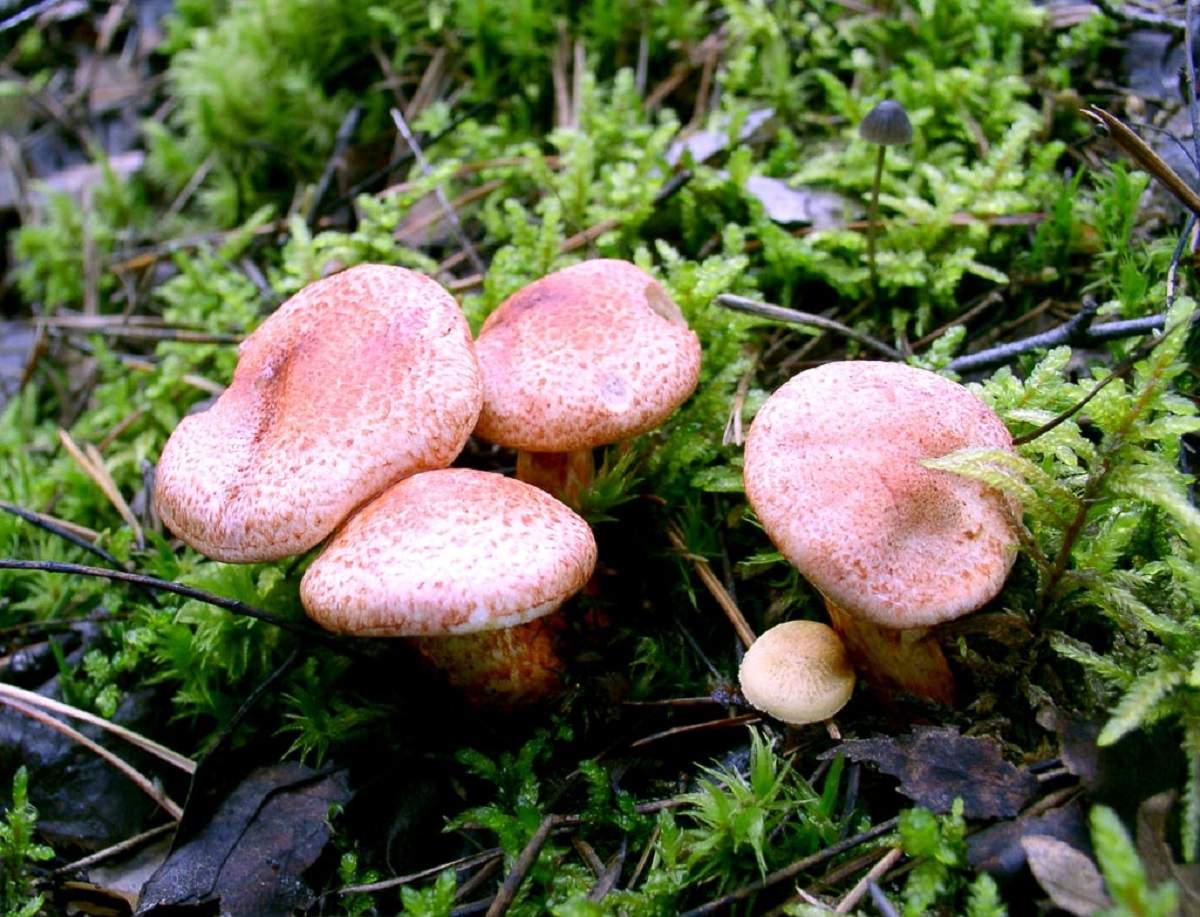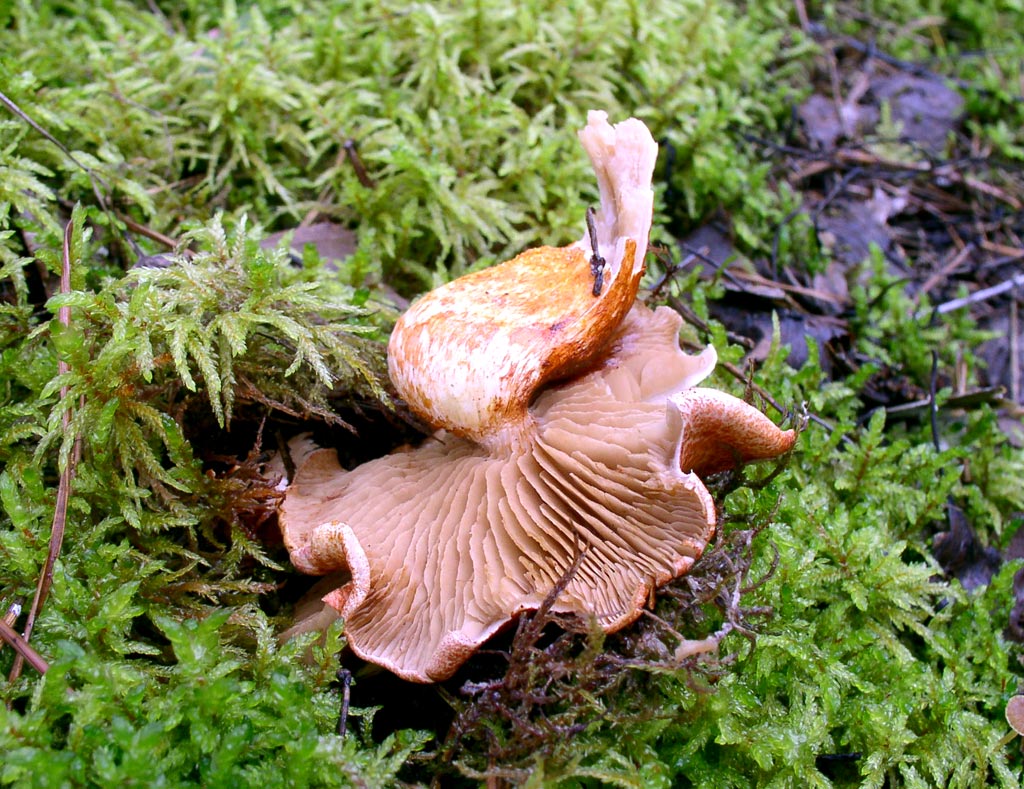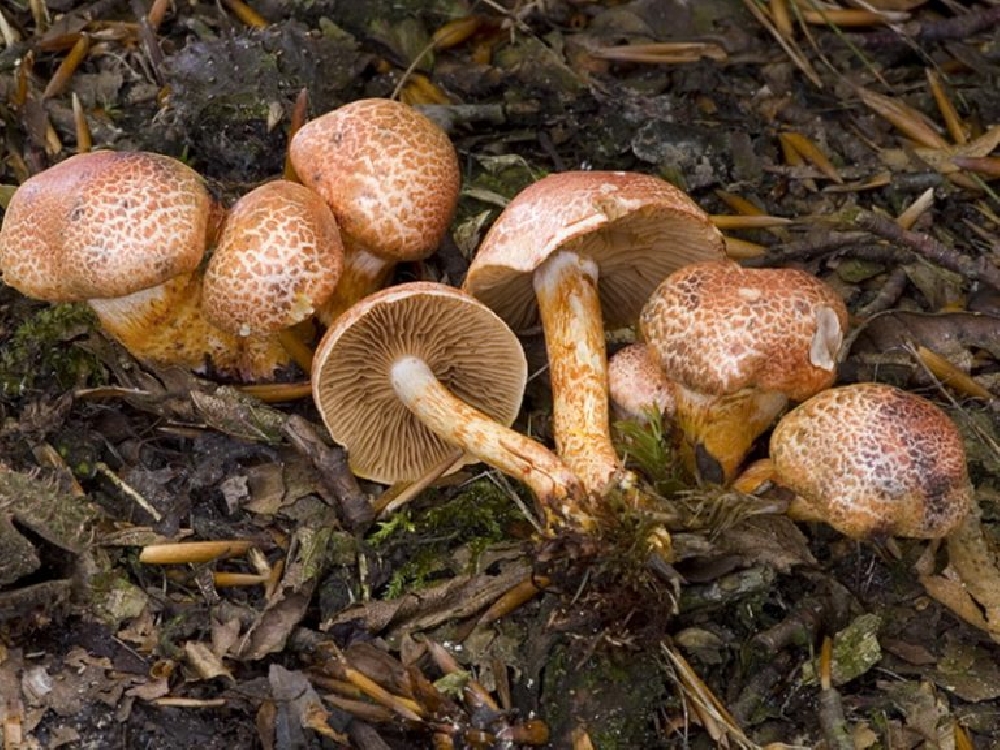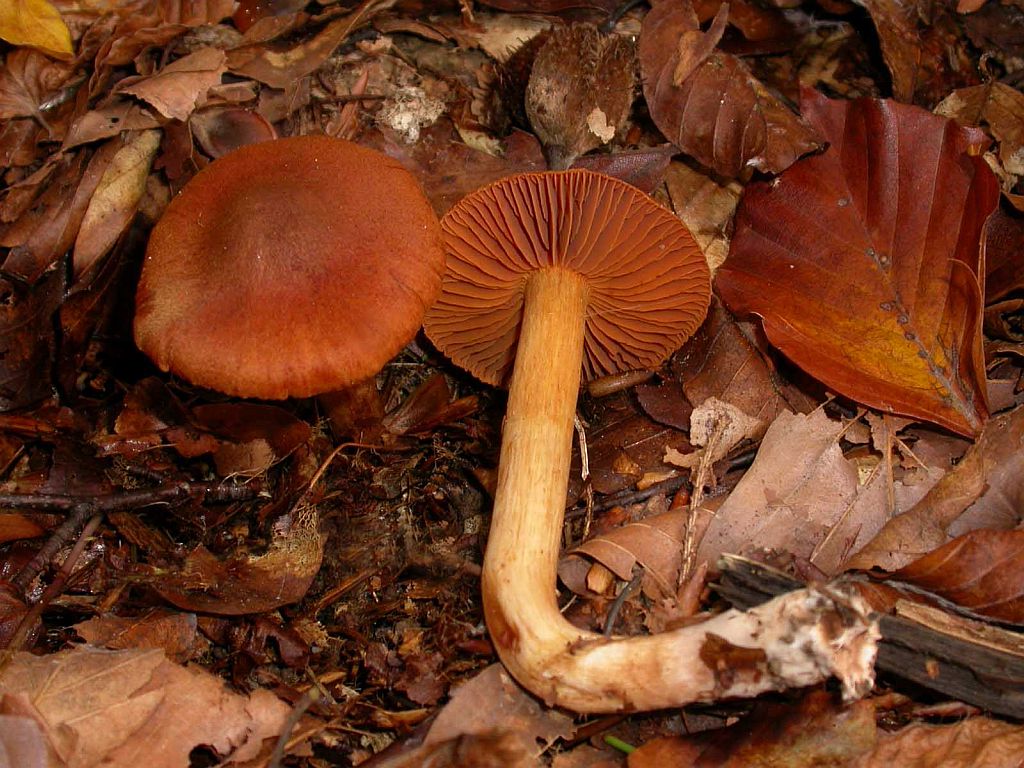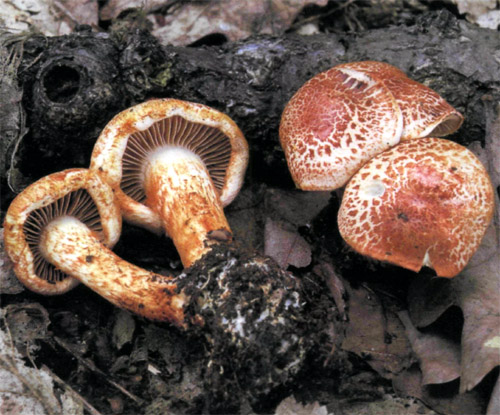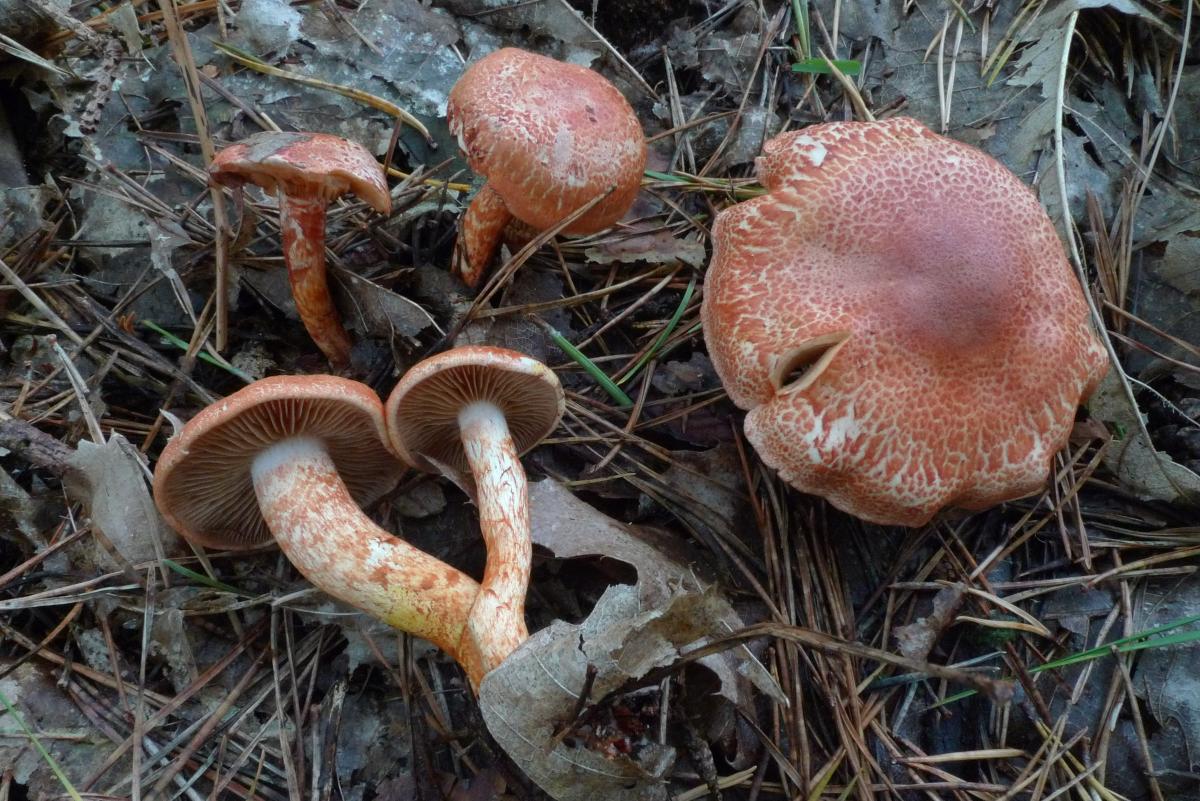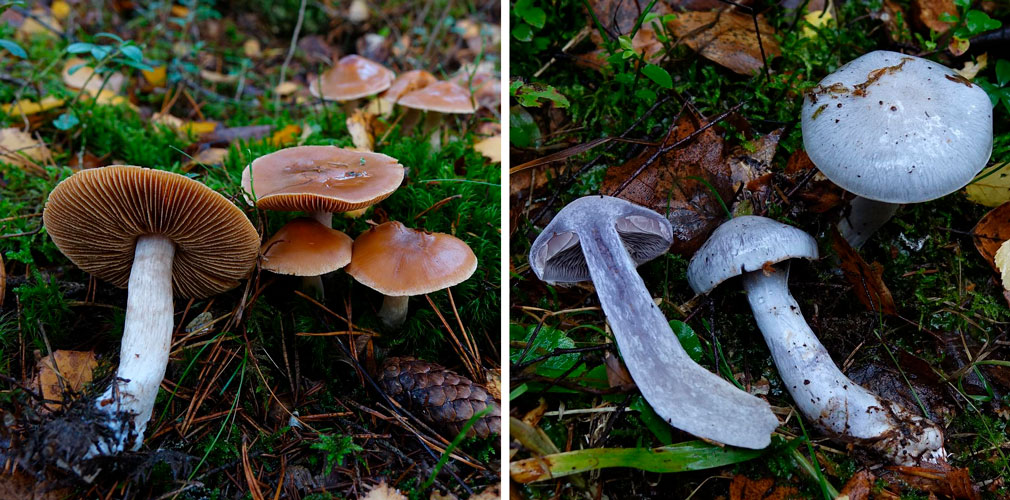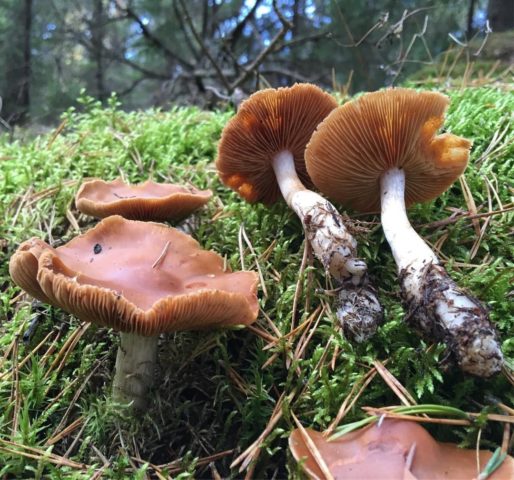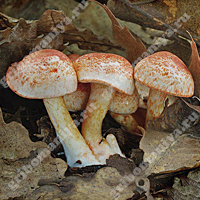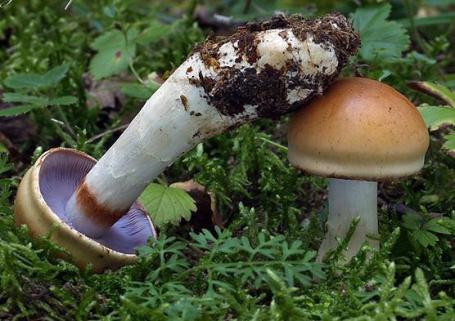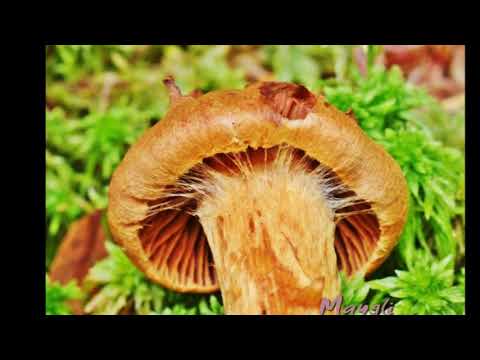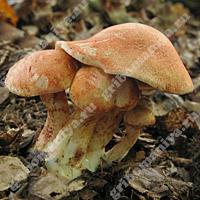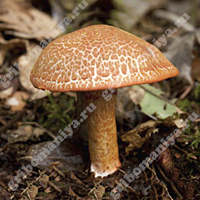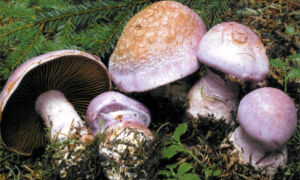Description of the peacock's webcap
The fruit body of the peacock spider web consists of a cap and a leg. At a young age, the shape of the cap is similar to a ball, later it straightens and becomes flat. There is a tubercle in the center of the cap, and the edges are strongly pressed and cracked. The entire surface of the peacock's spider web is dotted with small scales. The color of the scales is brick.
The hat sits on a very strong and thick leg. There are also scales on the stem. Frequently located scales are located under the cap. The structure of the plates is fleshy. The color of the plates in young mushrooms is purple. The pulp of the peacock's spider web is a little fibrous, its taste is neutral, and there is no smell.
Variability of peacock webcaps
A characteristic feature of this species is the change in the color of the scales on the cap and stem. The cut flesh turns yellow.
Places of distribution of peacock spider webs
This type of mushroom is found in many European forests. Peacock cobwebs grow in Great Britain, Germany, Denmark, France and the Baltic countries. In Russia, they grow in the European part, in addition, in the Urals and Siberia.
Peacock cobwebs prefer mountainous areas. The favorite trees of these mushrooms are beeches.
Evaluation of the edibility of peacock spiderwebs
The peacock webcap is a poisonous mushroom, it contains dangerous toxins in its pulp.
Related species
Spiderweb orange or apricot yellow - conditionally edible mushroom. The shape of its cap is convex, becoming more extended over time. The surface is uneven, slightly sticky, hygrophane. The color of the cap is orange-brown, brown-yellow or ocher-yellow.
The leg is silky, dense, with a weakly expressed white belt. The pulp is firm, thick, yellowish or whitish in color. Orange cobwebs bear fruit from August to September. They grow in spruce and pine forests. They rarely come across.
The webcap white and purple is a conditionally edible representative of the genus. The hat at a young age has a rounded-convex shape, later it becomes convex-outstretched. The surface of the cap is uneven and shiny. The color is whitish-lilac, lilac-silver, off-white or yellow-brown. The leg is clavate, white with a purple tint. A rusty or whitish band is visible on the leg, sometimes it can disappear. The pulp is watery, thick, blue-gray.
Fruiting in white-purple spiderwebs is observed from August to September. These mushrooms settle in deciduous and mixed forests. They come across infrequently. Prefers moist soil. They grow in small groups or singly.
Triumphal webcap - Cortinarius triumphans
Written by Nikolay Budnik and Elena Meck.
Triumphal webcap - the most delicious of all cobwebs. It is named so (in our opinion) because of its golden yellow color - like a golden wreath among the triumphant commanders of Ancient Rome.
For a long time we could not find this mushroom and now we understand why. On Ulom Zheleznaya there are mainly peat, sandy, sandy loam soils. There are also clayey ones, but we rarely go to the forests that grow on them. And the Triumphal Webcap loves calcareous-clay soils. Already there it is found in places in abundance.
Triumphal cobwebs can be fried, pickled, dried. In the marinade, these mushrooms remain light, firm and beautiful.

1. The triumphant webcap is considered the best webcap.

2. They say that it looks like a golden brown bun.

3. Indeed, its golden color cannot be confused with anything.

4. Sometimes mushrooms grow in huge numbers.

5. We know of one very prolific mycelium.

6. Around one tree we once found 103 mushrooms.

7. We found the first triumphal cobwebs in early August.

eight. . and the last in mid-October.

9. This mushroom with a wavy head has grown in October.

ten.The triumphal webcap is also known as the yellow spiderweb.

11. Indeed, it grows in damp places.
12. It is often a mixed forest dominated by Christmas trees.

13. These ate are usually old.

14. But in any case, mushrooms love clay soil.

15. . the presence of birches.

16. Here is a forest typical for the growth of these mushrooms.

18. Triumphal webcap - a large mushroom.

19. This is the average size of the cap.

20. And the height of the mushroom is considerable.

21. All of it gives the impression of a weighty and strong mushroom.

22. A triumphant golden-yellow spiderweb cap.

23. Its middle is usually always darker.

24. The hat is smooth.

25. sticky in wet weather.

26. On its edges, the remains of a veil are sometimes visible.

27. This is how the cap fits against the leg.

28. The mushroom plates look very neat.

29. At first, they are covered with a cobweb blanket.

30. The color of the plates in young mushrooms is almost white.

31. The veil disappears with age.

32. the plates acquire a clay tint.
33. This is how they attach to the leg.

34. Let's take a closer look.

35. The stem of the mushroom is slightly lighter than the cap.

36. Often it thickens towards the bottom.

37. There are, of course, such skinny specimens.

38. To the very base, the leg narrows.

39. This mushroom has an unusual and thick leg.

40. Shaggy torn red belts are visible on the leg.

41. Usually there are three of them.

42. The leg is solid inside.

43. Its middle is often softer than the edges.

44. The flesh of the mushroom is thick and strong.

45. But often the leg is wormy.

46. Here you can clearly see the "shaggy" on the leg of the mushroom.

47. And the caps are usually clean and strong.

48. These mushrooms have already survived the frost.

49. The triumphant webcap is good both in appearance and in taste.

50. Here cobwebs coexist with a brick-red pseudo-foam.

51. This is how they look pickled.
And here is a short video about the triumphant webcap. We tried to tell you more about it.
Excellent webcap (Cortinarius praestans) as it looks, where and how it grows, edible or not
The webcap is excellent: photo and description
The webcap is excellent - a conditionally edible representative of the Webinnikov family. The mushroom rarely catches the eye, it is listed in the Red Book. To replenish the population of the species, it is necessary, when a specimen is found, to pass by or carefully cut it off, trying not to damage the mycelium.
Description of the excellent webcap
Acquaintance with the excellent webcap must begin with a description of the external characteristics. The fungus has a coffee mucous surface, and a thin cobweb covers the spore layer. In order not to confuse it with inedible specimens, you need to view photos and videos.
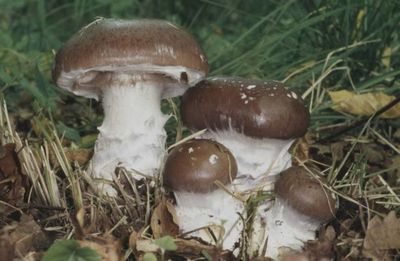
The mushroom is listed in the Red Book
Description of the hat
The cap with a diameter of 15-20 cm has a convex shape, as it grows, it straightens and becomes depressed with wrinkled edges to full maturity. The color of young specimens is purple, then changes to red, at the end of ripening it becomes brown. The surface is velvety, matte, in wet weather it is covered with a mucous layer.
The lower layer is formed by notched-accrete plates. Depending on age, they are painted gray or dark coffee color. In young representatives, the plates are covered with a thin, light cobweb-like film; as it grows, it breaks through and descends on the leg in the form of a skirt.
Reproduction occurs by elongated, large spores, which are located in a rusty-brown powder.
The pulp is dense, fleshy, with a pleasant taste and smell
Leg description
The dense leg reaches a height of 15 cm. The surface is covered with snow-white lilac skin, with age it becomes light chocolate. The snow-white-bluish pulp is dense, fleshy, when in contact with alkali it becomes dark red. When cut, a pleasant mushroom aroma is captured.
The fungus is found only in the Bashkir forests
Where and how it grows
The webcap is an excellent rare guest of deciduous forests. Due to the decline in the population, it was listed in the Red Book.In Russia, it can be found only in the forests of Bashkiria. This species forms mycelium next to the beech. Grows in large families, bears fruit from May to mid-October.
Is the mushroom edible or not
The excellent webcap belongs to the 4th group of edibility. Due to its pleasant mushroom taste, it is widely used for preparing a variety of dishes. It can be fried, boiled, stewed. But the most delicious are salted and pickled mushrooms. It is also dried. Dried mushrooms are stored in paper or linen bags in a dark, dry place.
Doubles and their differences
The excellent webcap, like any forest dweller, has similar brethren. These include:
- Watery blue - has a hemispherical cap of a light sky color. The surface is glossy, slimy. The stem is dense, bluish-purple in color; closer to the base, the color changes to an ocher-yellow color. The pulp is blue-gray. Despite the insipid taste and unpleasant aroma, this representative of the mushroom kingdom belongs to the edible category. They live in large families in the deciduous forests of Primorsky Krai.
Edible mushroom, used for food in salted and pickled form
Due to the lack of taste and smell, the mushroom is not used in cooking
Conclusion
Excellent webcap - conditionally edible mushroom Red Book. Grows in mixed forests from May to mid-autumn. Due to its pleasant aroma and good mushroom taste, it is used for the preparation of winter preservation. In order not to confuse this representative with inedible species, you need to know the external description and view the photo.

